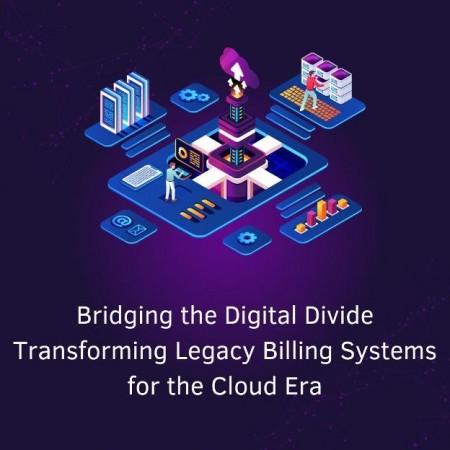
In today's rapidly evolving digital landscape, Ravi Mani, an accomplished technology leader, explores the transformative journey of transitioning legacy billing systems to cloud platforms. Drawing from his extensive hands-on experience, he highlights the urgent need for modernization and the innovative strategies driving this evolution.
The Shortcomings of Legacy Billing Systems
Legacy billing systems, the financial backbone of organizations, struggle to meet modern demands due to outdated architectures, scalability issues, and integration challenges. Rising maintenance costs, reliance on obsolete hardware, and a shrinking talent pool further complicate operations. Lacking agility, they hinder real-time insights and adaptation to evolving pricing models.
Revolutionizing Financial Operations with Cloud Migration
The advent of cloud computing has introduced a paradigm shift in billing systems, offering enhanced scalability, cost efficiency, and flexibility. Leadership in automating over 94% of billing processes and increasing utilization by more than 90% underscores the transformative potential of cloud migration.
Cloud-based billing systems empower organizations to manage growing transaction volumes, integrate seamlessly with advanced analytics tools, and respond swiftly to evolving market dynamics. The development of tools like the ORMB-CAH Extract File and Self-Bill Reports Recon has demonstrated how such solutions can streamline financial processes and deliver tangible efficiency gains.
Three Key Approaches to Migration
Migrating billing systems to the cloud is not a one-size-fits-all endeavor. Organizations typically adopt one of three primary strategies:
1. Rehosting:
This approach lifts and shifts the existing system to the cloud with minimal changes, enabling a quick transition but limiting the advantages of cloud-native features.
2. Re-Platforming:
A step beyond rehosting, this strategy involves minor modifications to optimize the system for cloud infrastructure. Organizations can achieve improved performance and cost efficiency while maintaining a balance between modernization and operational continuity.
3. Re-Architecting:
The most comprehensive approach, re-architecting involves redesigning the billing system to be fully cloud-native. This enables advanced capabilities such as real-time processing, modular microservices architecture, and seamless integrations. While resource-intensive, this method future-proofs the billing system and maximizes cloud benefits.
Navigating Migration Challenges
Despite its benefits, migration poses challenges: ensuring data integrity, minimizing downtime, meeting compliance requirements, implementing encryption, and managing stakeholder resistance. With strategic planning and execution, organizations can overcome these risks and fully leverage cloud billing solutions.
Emerging Trends Shaping the Future
The landscape of cloud billing continues to evolve, with emerging technologies enhancing efficiency and security:
AI Integration
Artificial intelligence is revolutionizing billing operations with predictive analytics, automated claims adjudication, and intelligent chatbots for customer support. AI-driven fraud detection mechanisms further bolster security.
Real-Time Analytics
Cloud platforms enable real-time monitoring of billing trends, allowing businesses to make data-driven decisions instantaneously. This capability also supports dynamic pricing models and proactive anomaly detection.
Blockchain Technology
Blockchain enhances transparency and security in billing transactions by ensuring immutable records and automating reconciliation processes through smart contracts.
Serverless Architectures
Serverless computing offers a cost-effective approach to billing by allowing automatic scaling and eliminating infrastructure management burdens. Organizations can focus on business logic while benefiting from optimized cloud resource utilization.
The Road Ahead
As digital transformation accelerates, organizations that embrace cloud-based billing systems will gain a competitive edge through improved efficiency, enhanced security, and greater flexibility. By strategically navigating the migration journey and leveraging emerging technologies, businesses can future-proof their financial operations.
In conclusion, Ravi Mani's pioneering insights and hands-on innovations illuminate the path to modernizing billing systems, making a compelling case for transitioning to cloud platforms. His leadership in automation and cloud migration initiatives has not only driven operational excellence but also delivered significant cost savings for clients. Organizations that follow this blueprint will unlock new avenues for innovation, agility, and long-term growth in the ever-evolving digital landscape.

















